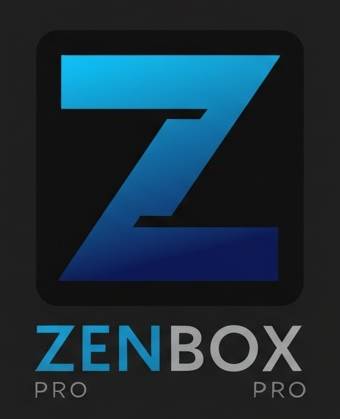Modern cars are packed with technologies that—at least in theory—are intended to aid drivers in everyday driving. One such solution is the Traffic Sign Recognition (TSR) system. While its premise sounds sensible—automatically recognizing speed limits and informing the driver of applicable regulations—practice shows something entirely different. In SEAT cars, TSR has become a source of irritation rather than a help. Inaccurate readings, persistent messages, and constant interference with vehicle settings are just some of the reasons why many users seek a way to disable it—temporarily, or ideally, permanently.
Why can the TSR system irritate even the most calm drivers?
Although manufacturers present TSR as a safety feature, SEAT drivers' experiences are quite different. In practice, the system often operates inaccurately or even absurdly.
One of the most frequently reported problems is misinterpreting road signs. TSRs can "catch" a sign placed on the side of a service road or a speed limit sign that has long since expired. As a result, the car begins to impose restrictions on the driver that have no bearing on actual road conditions.
Another issue is the automatic adjustment of the adaptive cruise control (ACC) to the signs read by the TSR. This means that even if the driver sets the cruise control to 120 km/h, the system can suddenly "reduce" the speed to 70 km/h – because a misread sign suggested so. This situation is not only frustrating but can also be dangerous for other road users.
Worse still, many drivers find that even if they manage to disable TSR in the settings, the system reappears after restarting the vehicle. User decisions are not sustainable, and each trip begins with tedious menu navigation.
How do I turn off the TSR system temporarily while driving?
In some SEAT models, the driver can attempt to temporarily deactivate TSR via the settings available in the vehicle's multimedia system. While this isn't a permanent solution, for many people it's a first step towards improving driving comfort.
Here's how to do it:
- After starting the car, enter Main menu infotainment system.
- Select a tab Driving assistants (may also be called "Driver Assistants" or "Assistance Systems" - depending on the version).
- Find a position responsible for Road sign recognition.
- Uncheck or disable the TSR feature.
Some models will require additional confirmation of your decision. It's also worth noting that some software versions don't allow you to completely disable this feature at the user level – in such cases, the option will be grayed out or disabled.
Unfortunately, the system often reactivates after restarting the engine, meaning you have to go through the same steps again and again. For many drivers, this is a frustrating waste of time and an unnecessary distraction from the road.
How to permanently disable TSR? ZENBOX PRO as an effective and elegant solution
If you are tired of turning off your TSR every day and want to say goodbye to this annoying "helper" once and for all, it is worth taking a look at the device ZENBOX PROThis innovative solution was created for VAG group car owners (Volkswagen, Audi, SEAT, Skoda) who want greater control over their vehicle's electronic systems.
ZENBOX PRO It allows you to permanently disable the TSR without having to modify the controller software, without risking warranty loss, and without having to disassemble the car's interior. Simply connect the device to a standard OBD2 port, follow the instructions, and the entire process takes just a few minutes.
The most important advantages of ZENBOX PRO:
- Permanently disable TSR – the system will no longer turn on when the vehicle is started.
- Safe operation – the device does not affect critical functions of the car or cause errors in the on-board computer.
- Reversibility of changes – you can restore factory settings at any time.
- Versatility – ZENBOX PRO supports many SEAT models and other VAG group brands.
This is a solution for those who value peace of mind, predictability and the absence of unnecessary interference with driving.
In which SEAT models is the TSR problem most common?
Not all SEAT models are equally likely to cause TSR-related driver frustration. Analysis of user reviews and the number of reports indicates the specific models and model years where this issue occurs most frequently:
- SEAT Leon (4th generation, 2020–2024) – especially models with the MIB3 infotainment system. Users report misreading highway signs and frequent "forced" changes to cruise control settings.
- SEAT Ateca (2019–2023) – Signs on exits and service roads are difficult to read. TSRs often confuse local signs with the correct ones.
- SEAT Tarraco (2020–2024) – many drivers complain about automatic speed reduction by ACC based on incorrect data from TSR.
- SEAT Ibiza (2018–2023) – a common problem with TSR being active by default and limited access to its settings.
- SEAT Arona (2018–2023) – in addition to incorrect character recognition, persistent warning messages also appear that cannot be easily disabled.
It is the owners of these models who most often decide to use ZENBOX PRO as a way to permanently solve the problem.
Summary
Instead of increasing comfort and safety, the Traffic Sign Recognition (TSR) system in SEAT vehicles often irritates drivers, generates unnecessary messages, and disrupts the natural driving rhythm. Although it can be temporarily deactivated through the car's menu, this solution is short-lived and requires constant reactivation.
If you really want to free yourself from TSR – permanently and safely – it is worth reaching for ZENBOX PROThis device was created for drivers who want to drive consciously, comfortably, and without constant interference from systems that aren't working as they should. It will give you full control of your car—exactly as you expect.
